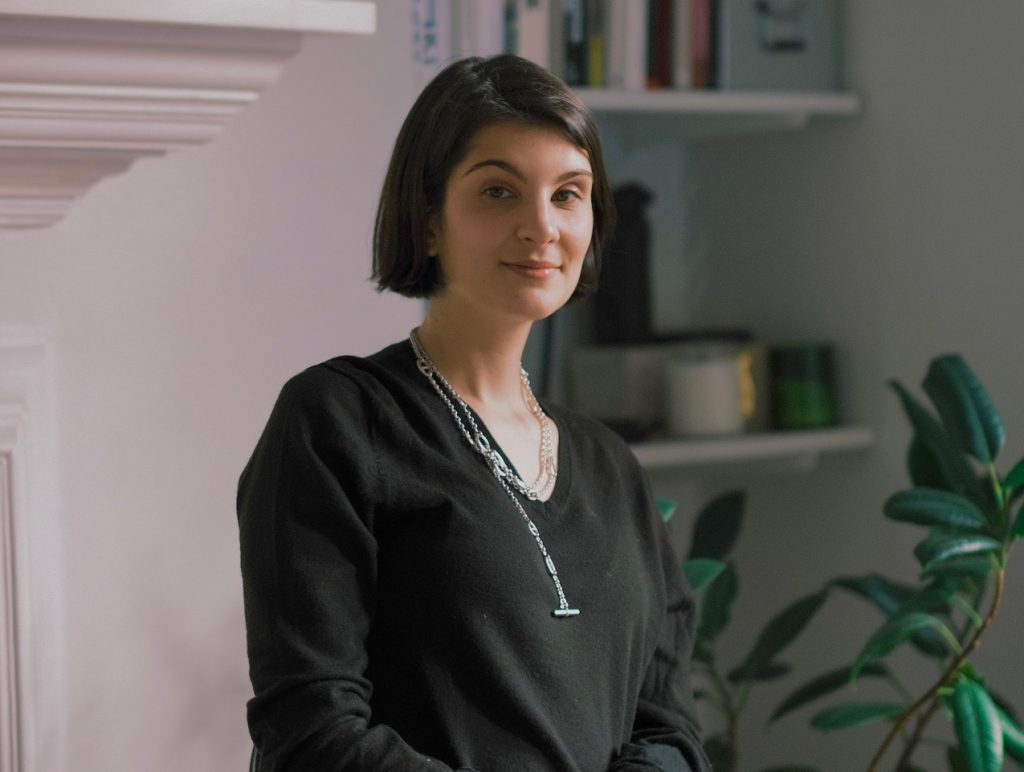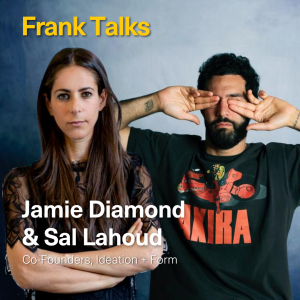We are very excited to bring you this new Frank Talk with Viola Angiolini! Viola is Director of Research and Curatorial and European Liaison at Jeffrey Deitch in New York. Prior to moving to New York City, Viola lived in Milan where she collaborated with emerging artists and co-founded the independent art space Armada. Her writings have appeared in Flash Art and Mousse Magazine. Viola earned a BFA from Accademia di Belle Arti di Brera, Milan, and an MA in Art History from the Institute of Fine Arts, NYU. Please enjoy reading Viola’s Frank Talk below!
What was your first job in the Arts?
My first job in the arts was during my first year of undergraduate studies in Milan, Italy. I joined the team of Gasconade, a nonprofit art space devoted to presenting the youngest Milan-based artists and their international peers. We offered a platform to emerging artists to realize their first solo exhibitions.
What was the most useful or important thing you learned at that job?
I learned the importance of being part of a community and the added value that the collective dimension can confer to an individual’s research and endeavors. I also learned that I love supporting artists and fostering talents and that I would make a career out of this passion.
Tell us a little more about yourself. When did you realize you wanted to pursue a career in this industry?
I have always been interested in art and art history. I enrolled in a BFA program and realized early on that criticizing others’ efforts was easier than making yours worth of critique. I lacked drive and talent for art-making, but I deeply loved the conversations and exchanges. I figured I could find a different path within the art industry.
What do you do now?
I work with Jeffrey Deitch. I’m Director of Research and Curatorial at the New York gallery.
Where are you from?
I grew up between Northern Italy and Switzerland and lived in Milan for a few years before moving to New York City.
What is the arts community like there?
In Milan, private initiatives and engaging galleries’ programming have long been making up for the lack of substantial institutional and public support. This context has invited the younger generations to become proactive, and as a result, over the last few years, the city has witnessed the rise of small artist-run spaces and galleries.
Has where you come from shaped what you do in the arts today?
Yes, absolutely. I spent my teenage years in a city north of Milan, Varese, home to the Panza Collection. I believe that the countless hours spent in front of Minimalist works of art partly accounts for the fascination for America that led me to move to New York City. At the same time, the relationships I developed with artists and art professionals in Milan profoundly shaped my interests and perspective.
What is the best piece of advice you can give about working in the art world?
I think it’s essential to cultivate a distinct vision.
What is one of your greatest accomplishments in your career so far?
The most rewarding aspect of my profession is seeing artists accomplishing their goals and carry on new and ambitious projects.
What has been a challenge for you?
Living in a foreign country, especially during the past year, comes with its complications and challenges. But, I am extremely lucky to have a strong support system and a very supportive work environment.
What is something you do every day at the office (or your current home office)?
I make handwritten lists. I’m often working on multiple projects, and at times it can be challenging to remember smaller tasks and juggle priorities. Lists are the compass of my work life.
What is one of the weirdest things you have had to do on the job in your career?
In 2015, my friends and I invited artist Jared Madere to show at Armada, the independent art space that we co-founded and ran in Milan from 2014 to 2018. For his solo exhibition, Jared had conceived an elaborate installation comprised of the most disparate materials: fresh cherries, sealing wax, bread, brass, clothes, a whole bed, burnt chickpeas, cigarettes… We went to one of the fanciest grocery stores in the city to source candied fruit that the artist would use to create the features of two puppet-like figures. We ended up tasting and eating a year-worth of sugar intake because we didn’t know how to explain to the shop assistant that we were not interested in the flavor.
What defines a good employee? What defines a good boss?
Good communication skills are essential to both a good employee and employer to set clear expectations and enhance the synergy.
What do you think makes a person hirable?
I think that relevant experience and willingness to learn are the two most important aspects.
What is your advice to making yourself stand out in your workplace? Any good tips for a giving a great interview?
Continuously expand your education, take the initiative, be ready to wear multiple hats.
Is there any advice you would like to give people entering the art world?
Connecting with people and building personal relationships in the field beyond your work environment. Be self-aware and learn how to read situations to be able to seize opportunities gracefully.
What is the best exhibition you have seen in the last year?
A little over a year ago, Olga Balema’s solo show at Bridget Donahue—such a clever and emotionally generous exhibition.
If you could own a work by 5 different artists, who would be in your collection?
If I had no budget limitations, Mike Kelley, Mariko Mori, Judy Chicago, Isa Genzken, and Carla Accardi.
What artwork is in your home office?
I have a sculpture that was a gift from my good friend and talented artist, Davide Stucchi. It’s a playful piece realized by remodeling a wire hanger to look like a tridimensional drawing of body parts. I also have a small wall-sculpture by Camille Blatrix.




